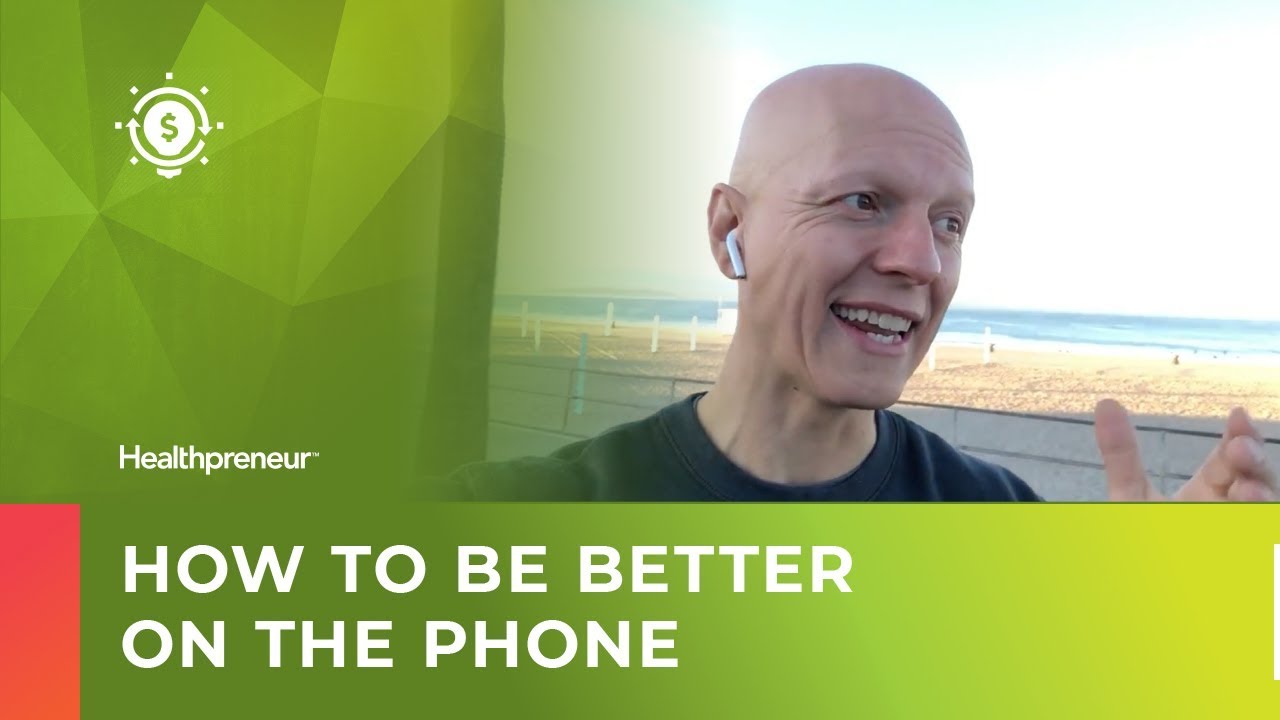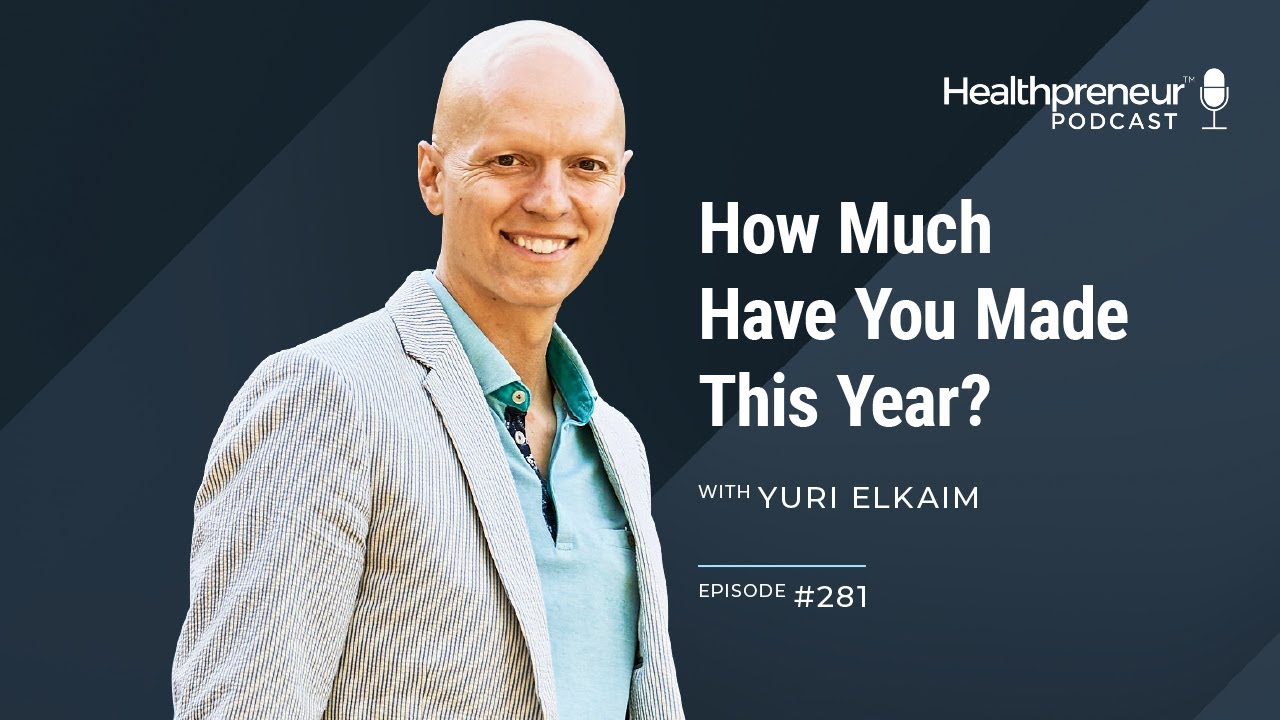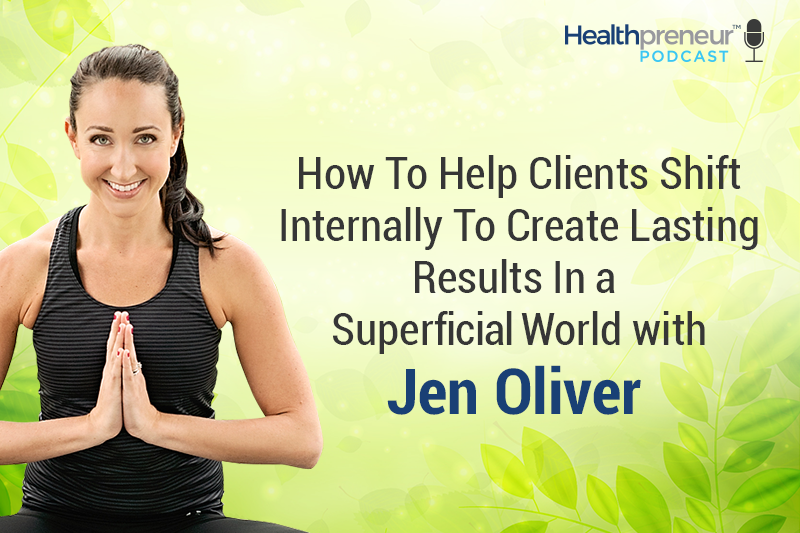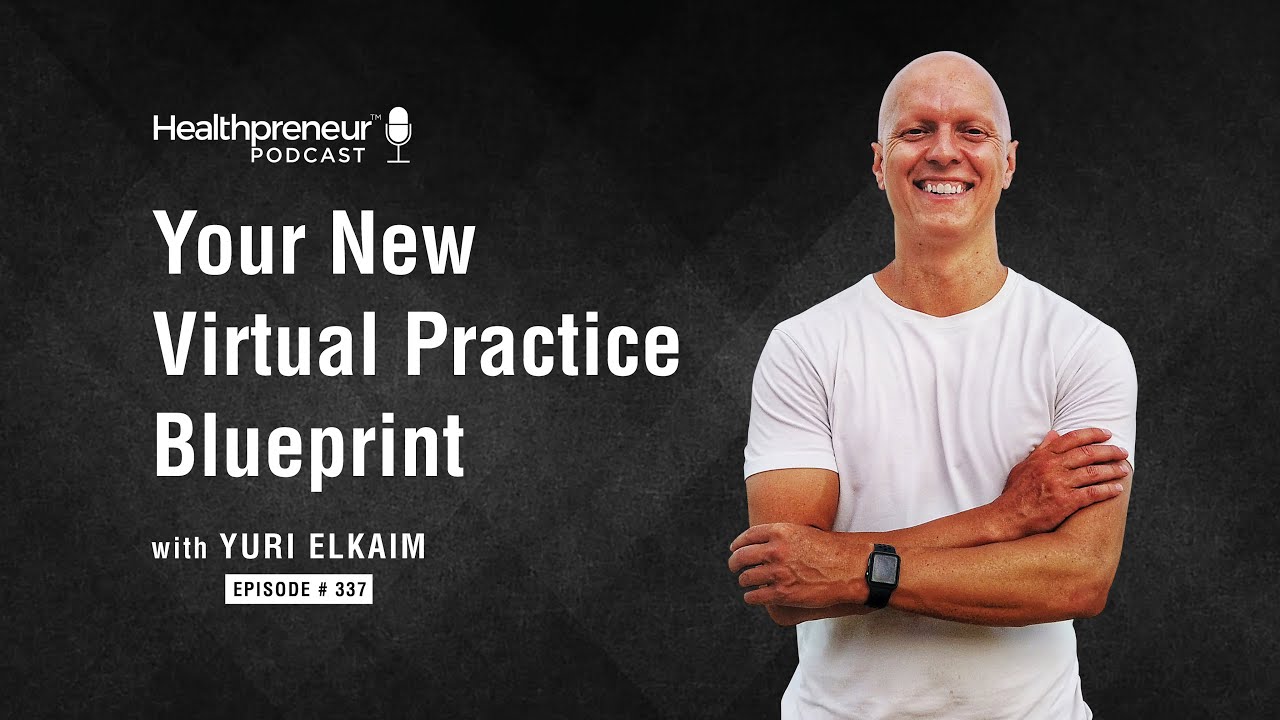Are You Solving a Major Pain or Problem?
Welcome to the Healthpreneur podcast! In today’s episode, we’ll dissect what it means to solve a major pain or problem and distinguish whether you’re doing that in your business. On our client scorecard, this is the second activator and a necessary component to getting your business off on the right foot.
Why must you clearly solve a major pain or problem? Because people don’t act otherwise. Think about it: Are people looking to lose weight, get healthy, or balance their hormones when everything is already fine? Not often.
Some degree of pain motivates people to action. So, what is the major pain or problem that you solve? Is your offer compelling and moving?
Tune in to hear how to rate this activator and connect your audience to it on a deep, impactful level.
In This Episode I discuss:
01:00 – 02:30 – Introducing today’s topic: Solving a major pain or problem
02:30 – 05:00 – Attracting people who act – not just browse
05:00 – 08:00 – Understanding why people act
08:00 – 10:00 – The question to ask and how to reach the answer
10:00 – 15:00 – What to sell and what not to sell
Transcription
Hey, welcome back to the show and in today’s episode we’re going to be talking about whether, or not you solve a major pain or problem. This is the second activator in our client’s activator scorecard. If you still don’t have this, then I want you to pause what you’re doing right now.
Go to healthpreneurgroup.com/scorecard, download the scorecard, get your score and what this is going to help you do is identify the leaks and opportunities in your marketing so that you can activate more clients.
So what that means is how do you put stuff in front of people that they care about? Essentially, how do you turn cold leads into high paying clients? As I mentioned in the previous episode, which by the way, if you haven’t listened to episode 247, called the client activator scorecard, you should probably do so. In that episode, I’m going to give you some good foundations about what the scorecard is.
We talk about the first client activator and I’m not going to re-iterate all that stuff, so just go back and listen to that episode. Okay?
Introducing today’s topic: Solving a major pain or problem
In today’s episode we’re talking about are you solving a major pain or problem, which is the second client activator. Remember we’ve got a scale of one to nine, nine being ideal, one being your kind of in deep doo doo. So when it comes to this specific activator on the one side, we have the statements I want you to think about. You are serving people who are mostly browsers looking for tips and band aids instead of real transformation.
We talked a little bit about this in the first activator in terms of seeking a solution. This kind of ties in with that, but if your marketing is attracting people who are mostly browsers, you’re not helping yourself. This is why I’m not a huge fan of blogging, which is ironic considering my blog has a million visitors per month.
Attracting people who act – not just browse
I’ve recognized blogging attracts browsers for the most part. I mean, there are people that are seeking a solution, it depends on the content you are developing. But for the most part, our average time on a site is one minute and 21 seconds. So I don’t know about you, but no one’s transforming their life in one minute and 21 seconds. By contrast, if you have a perfect client pipeline running Facebook ads that pinpoint a very specific problem or pain someone’s dealing with, and you invite them to watch some type of training that’s going to give them some really important distinctions to solve that, now you’ve got a very, very captive individual who has raised their hand and say, yes, I’m interested. This makes sense, I want to book a call to you and then you have a conversation to see if you’re a good fit or not. And so that’s why when you are looking to work, you’re not just getting anyone to work with.
Understanding why people act
I’m not talking about you work with 50 different clients, they pay you 50 bucks an hour, one off sessions here and there. I’m not talking about that, I’m talking about you work with a very specific single target market. You charge a premium price, three, four or $5,000 for an outcome, not a session an outcome, which might be six to 12 weeks, okay? So you help people lose 10 pounds of belly fat or you help them get rid of Hashimoto’s thyroiditis, whatever it is, it’s a very specific outcome. The deliverables, the process through which would you do that is less important, but you’re very clear on the problem that you’re solving.
We talked about alopecia in the previous episode, so when I lost my hair when I was 17 obviously there was a major pain or problem that I wanted solving. Now, I wasn’t seeking out that solution before my hair started falling out. And this is a bill, this is such a good example of how humans operate. I don’t care if it’s hair loss, heart attacks, longevity, memory loss, anything. We don’t take action until we are in pain.
So I had bushy eyebrows, long brown hair, probably spent a little bit too much time in front of the mirror back in the day. But I was like, I was not thinking about, “Oh, what can I do to preserve my hair?” I was not thinking about how do I prevent hair loss. It wasn’t even a thought until my hair started falling out. And then I was like, all right, let’s fix this now. I’m going to give you a number of examples here, so I hope you really understand this. So another example, I’m playing soccer with my kids the other week, Oscar shoots the ball, I dive and save it. Next morning I wake up and my rib is like killing me. I’m like, what the heck? I was a goalie for 24 years, right? I mean, this is what I did and I’m thinking there’s nothing else that can explain why my ribs are hurting. And it was really, really painful.
Like it wasn’t a broken rib, it wasn’t a strained rib, it was I think a strained intercostal muscle or whatever it was. Anyways, I ended up like really seeking out solutions. So, went to a local chiropractor. I haven’t been to a chiropractor in probably two years, just so happens my dog was actually having some issues with his leg and this chiropractor does animal chiropractic too. So it was kind of a two birds for a one stone type of deal. But anyways, I was seeking at that solution and here’s the thing, I was like, I know I could have benefited from chiropractic on a consistent basis over the past couple of months. Number one, I couldn’t find a good chiropractor, mainly because I wasn’t looking for one. But when my back and my ribs were killing me to the point where I was waking up at two in the morning, now I’m like, you know what I’m going to do first thing in the morning? Is I’m going to book an appointment with the chiropractor. I don’t care. I got to find one.
And it became a major pain or problem that I needed to solve and therefore I was willing to invest to solve the problem. But I wasn’t doing that on a preventive stand, I wasn’t doing like a weekly adjustments from the prevention standpoints. And listen, like I’m all for prevention, like just probably like you are. But the reality is that humans, that’s not the way we operate. We only do things when shit hits the fan. So a good buddy of mine who’s actually a chiropractor now, we were roommates in school, he worked at a cardiac rehab clinic in Toronto. And one of the things that really annoyed him was you have a patient that just had a heart attack and like triple bypass surgery. And so he was walking these people through their rehab process, right? Treadmill, progressive, you know, training and stuff like that. And one of the things that really, really just drove me crazy was that after a couple months, they just went right back to their old routine and just went back through all those stuff. The very things that caused the problem in the first place.
The question to ask and how to reach the answer
Very few people are able to create sustainable, long lasting change in a proactive fashion. It’s usually some degree of pain that is going to stimulate us into action. I want you to think about with your offer and when I say your offer, I mean your coaching program, your introduction into your funnel, like your Webinar, your whatever it is, right? Is your thing solving a major pain or problem. So for instance, our client activator scorecard, I think it’s solving a major pain or problem. And that problem is you can’t or you’re not getting enough clients. The scorecard is going to show you why that is and it’s going to show you how to fix it. So I think that’s a pretty compelling offer. And again, we’ll see what the conversion say or we’ll see what the data shows us, but ultimately that is going after something that is compelling.
What to sell and what not to sell
Now one of the things that I do want to remind you of is we have to focus, and I’m going to get into this in one of the future episodes, but we need to focus on a major pain or problem that people are aware of. Okay? So here’s another thing we run into with some of our clients, is they help people lose weights, but they really, really want to get their mindset dialed in. And I say, “Yeah, like totally, everyone’s mindset should dialed in.” Like no matter what it is you’re selling, 80% of success is going to be mindset. Even our clients, right? Our most successful clients have their mindset dialed in and the ones who struggle and kind of take a long time to work through their own stuff is because of their mindset. But I’m not going to sell a mindset program, because no one wants that, right? No one, very few people are aware that their mindset is the single thing that’s holding them back until they’re in the trenches doing the work for the pain they want to resolve in the first place.
The pain they want to resolve in the first place was not, I have self-doubt. Okay? But the self-doubt is going to kick in when they go through the process to overcome the problem that they sought your help for. So the process through which you help people is not what you’re selling. It’s, you know, we obviously show you how to package your proprietary process in a way that becomes very exciting. But ultimately, most people don’t care, they just want the outcome. They want the outcome, right? So the major pain or problem, what is the major pain or problem you’re solving? When we look at what’s going to make something convert better than something else, like, I’ll just give you a couple of examples from a number of friends that I know in the info marketing space, guys who are doing seven and eight figure businesses with those really sketchy video sales letters, really bold promises. You know the ones, you’ve probably seen them. $37 offer by an hour it’s 27.
Anyways, so when you look at these offers, they are very, very pinpointed at, like the most successful offers, if you look at ClickBank, which is a digital marketplace for selling information products, they’re most successful products are weight loss. It’s weight loss, fat loss, abs, right? Those are major pain points that people have. They’re not selling like the mindset to get weight loss. That’s part of a program, but on the front end they’re selling the dream, they’re selling the dream of no longer dealing with this issue of excess weight. Okay? So I want you to think about your offer and ask yourself, am I solving a major problem? And second, does my audience know, are they aware of the major pain or problem and do they want it solved now? Prediabetes is not a major pain or problem, because most people are not even aware of it. Atherosclerosis or plaque buildup in the arteries is not a major pain or problem because most people are not even aware it exists until they have their first heart attack.
Go where there’s pain, do not sell prevention. I will just that alone, I’m going to just, I just saved you millions of dollars and millions of years of frustration. Do not sell prevention and sell people what they want, sell the solutions to their major pains and their major problems. The higher the degree of pain, the more urgency there’s going to be and the easier it’s going to be to get people to work with you. All right? So that is our second activator. Again, we’ve had nine total, which when they work together are like fantasies. Why can’t I remember the name of those stones from the vendors? You know those five stones on the glove, right? Once all five of them are dialed into that glove, then it’s up to super power to make everyone disappear. The four of them don’t do the trick. Same with these nine activators. All nine of them have to be dialed in. You can’t just have the second one and everything else is okay. If one out of the nine is off, the whole thing is off, so really important for you to get the scorecard, healthpreneurgroup.com/scorecard, download it.
It’ll take you two minutes to get your score and then you’ll see what category you fall into and then we’ve included a deep dive training for you to really give you a better understanding of what that all means to you in your business, and then how you can improve your score. So ultimately you can get more clients, make a lot more money, help more people, and all that good jazz that you started your business for in the first place. Is that good? So thank you once again for taking the time for joining me in today’s episode. Hope you’ve enjoyed it. I will see you on the next one coming up on Friday. I will be talking about the third activator in the market pillar of our client activation process. And for now, I hope you have an amazing day and I’ll see you then.
If you enjoyed this episode, head on over to iTunes and subscribe to Healthpreneur™ Podcast if you haven’t done so already.
While you’re there, leave a rating and review. It really helps us out to reach more people because that is what we’re here to do.
What You Missed
In our last episode I introduced you to the Client Activator Scorecard.
We’re going to be talking about the score card in the next few episodes, however in the last episode I wanted to explain to you what it is and give you an over view of how it works and how the Client Activator Scorecard can help improve your conversion rate by helping you diagnose the quality of your offer.
It will help you pinpoint 9 activators that will turn cold leads into high paying clients.
Tune in to find out why you should be using the Client Activator Scorecard and how it can improve your business.
Related posts
February 23, 2018
How To Help Clients Shift Internally To Create Lasting Results In a Superficial World — Jen Oliver
Today on the Healthpreneur…





